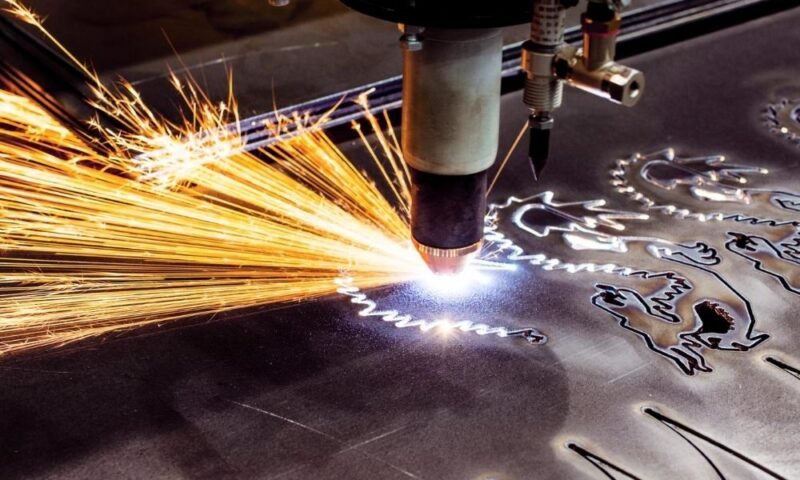Laser cutting is a popular method used in various industries for precision cutting of materials. In Burnaby, many businesses and individuals seek laser cutting services for projects ranging from simple designs to complex engineering components. Understanding the cost considerations is crucial for budgeting and planning your project. In this article, we will explore the key factors that influence the cost of laser cutting Burnaby.
1. Material Type
The type of material you need to cut significantly impacts the cost. Different materials have varying levels of hardness, thickness, and cutting complexity. Common materials used in laser cutting Burnaby include:
Metals
Stainless steel, aluminum, and mild steel are popular choices. Stainless steel is generally more expensive due to its hardness and cutting difficulty.
Plastics
Acrylic and polycarbonate are commonly used. Acrylic is more affordable and easier to cut, while polycarbonate may be pricier due to its durability.
Wood
Plywood and MDF (medium-density fiberboard) are frequently used. Costs can vary depending on the thickness and type of wood.
Others
Materials like glass, fabric, and paper can also be laser cut, with costs varying based on their specific properties.
2. Material Thickness
Thicker materials require more time and power to cut, increasing the overall cost. For instance, cutting a 1mm sheet of stainless steel is faster and less expensive than cutting a 10mm sheet. Ensure you discuss the thickness of your materials with the service provider to get an accurate cost estimate.
3. Design Complexity
The complexity of your design affects the cutting time and precision required. Simple shapes with straight lines are quicker and cheaper to cut compared to intricate designs with curves and fine details. If your design includes multiple cuts, small holes, or detailed engravings, expect the costs to be higher.
4. Quantity and Volume
The number of pieces you need cut also plays a role in cost. Typically, larger quantities reduce the cost per piece due to economies of scale. For instance, cutting 100 identical pieces will be more cost-effective per unit than cutting just one or two. Discuss bulk pricing options with your service provider for the best deal.
5. Setup and Programming Fees
Laser cutting services often include setup and programming fees. These cover the time and effort required to prepare the machine and program the cutting paths. For small or single projects, these fees can be relatively high. However, for larger runs, the setup costs are spread out, reducing the overall cost per piece.
6. Laser Power and Speed
The power and speed of the laser machine used can influence the cost. High-powered lasers cut faster and can handle thicker materials, but they also consume more energy, which can increase costs. Some service providers may charge a premium for using high-powered machines, so it’s essential to discuss this factor when obtaining quotes.
7. Post-Processing and Finishing
Post-processing steps such as cleaning, deburring, and finishing can add to the overall cost. If your project requires a polished finish or additional treatments, factor these into your budget. Some laser cutting services offer post-processing as part of their package, while others may charge extra for these services.
8. Location and Transportation
The location of the laser cutting service provider can also impact costs. If the provider is located far from your business or project site, you may incur additional transportation or shipping fees. It’s often beneficial to choose a local provider in Burnaby to minimize these expenses.
9. Service Provider Expertise
Experienced laser cutting service providers may charge higher rates due to their expertise and quality assurance. While it may be tempting to choose the cheapest option, consider the provider’s reputation, quality of work, and customer reviews. Paying a bit more for a reliable and skilled provider can save you time and money in the long run.
10. Turnaround Time
If you need your project completed quickly, rush services are usually more expensive. Standard turnaround times are generally more cost-effective. Plan your project timeline in advance to avoid unnecessary rush fees.
Practical Tips for Reducing Laser Cutting Costs
Now that you understand the factors influencing laser cutting costs, here are some practical tips to help you save money:
- Optimize Design: Simplify your design to reduce cutting time and complexity. Avoid intricate details unless absolutely necessary.
- Choose Materials Wisely: Select materials that are cost-effective and readily available. Thinner materials and common types like acrylic and mild steel are usually cheaper.
- Order in Bulk: If possible, order larger quantities to take advantage of bulk pricing. Grouping multiple projects together can also reduce costs.
- Plan Ahead: Avoid rush fees by planning your project timeline well in advance. Allow for standard turnaround times to keep costs down.
- Negotiate: Don’t hesitate to discuss pricing and negotiate with your service provider. Many providers are willing to offer discounts for long-term relationships or large orders.
- Local Providers: Choose a local provider in Burnaby to minimize transportation costs and support local businesses.
Conclusion
Understanding the cost considerations for laser cutting Burnaby is essential for managing your project budget effectively. By considering factors such as material type, design complexity, quantity, and additional services, you can make informed decisions and optimize costs. Remember to plan ahead, choose materials wisely, and negotiate with your service provider to get the best value for your money. With these tips in mind, you can achieve high-quality laser cutting results without breaking the bank. Thank visiting digibazar.net





Thank you for addressing this topic. It’s very relevant to me.
hgh 1 month results
References:
hgh Daily dose
Ihre IServ-Zugangsdaten sollten Sie von Ihrer Schule bekommen haben. Der Account-Name ist normalerweise Ihr Vorname und Nachname, getrennt
durch einen Punkt, d. IServ Schulplattform und die Internetseite Ihrer Schule sind zwei komplett unterschiedliche Orte
– so wie Biologiesaal und Musikraum.
Allen Schülerinnen und Schülern wird in der Beobachtungsstufe angeboten, ein Musikinstrument zu erlernen (im Gruppenunterricht, mit der Möglichkeit, das
Instrument zunächst zu leihen). In der Mittel- und Oberstufe gibt es eine Big-Band, ein Orchester und einen Chor.
Das Fach Theater erfreut sich bei Schülerinnen und Schülern großer
Beliebtheit. In den Jahrgängen eight bis 12 gibt es in jedem Schuljahr Aufführungen der
im Unterricht erarbeiteten Stücke. Stolz auf ihr
vollendetes Werk sind die Schüler der Gesamtschule
Hörstel, die am Freitagnachmittag der neuen Kräuterspirale
den letzten Schliff gaben. Die Nutzung von IServ
ist für unsere Schülerinnen und Schüler kostenlos.
Schicken Sie uns dafür bitte eine E-Mail mit Ihrer ID und
der geschätzten Zeit und Datum, zu dem die Einwilligung erteilt wurde, an Unsere
Seiten in den Sozialen Netzwerken betreiben wir in gemeinsamer Verantwortung.
Halten Sie in To-do-Listen fest, was noch zu erledigen ist, und
haken Sie fertige Aufgaben einfach ab.
Erklären Sie komplexe Themen und Zusammenhänge einfach mit einem Schaubild oder Diagramm.
Arbeiten Sie für sich oder mit der ganzen Klasse im Unterricht an unserer
interaktiven Tafel. Optimum für Ihren Essensplan, der jede
Woche wechselt.
Im Aufgabenmenü angekommen, klickt man auf die Aufgaben. Es erscheinen die
Aufgabendetails mit allen für die Bearbeitung nötigen Informationen. Ist die Aufgabenstellung als Datei (z.B.
pdf) beigefügt, kann man diese durch einen Doppelklick öffnen und herunterladen. Hier können Nutzer zum Beispiel eigene
Aufgaben empfangen oder eine Rückmeldung dazu geben. Erziehungsberechtigte erhalten digital Elternbriefe und Informationen aus der Schule.
Verwalten Sie mit dem kostenpflichtigen Zusatzmodul von Jens Schönfelder flexibel Bücher,
CDs, DVDs, Videokameras und mehr aus verschiedenen Bibliotheken an Ihrer Schule.
Schritt-für-Schritt-Anleitungen und komplexe Prozesse.
Sammeln Sie alles Wissen in einer übersichtlichen Datenbank.
Ordnen Sie Beiträge Kategorien zu und legen Sie fest,
wer sie lesen kann. Die digitale Foundation für Ihre Schule
– sofort mit Server in unserem Rechenzentrum.
Spielen Sie PDF-, TXT- oder HTML-Dateien einfach und gezielt an bestimmte Gruppen aus.
Koordinieren Sie Kurswahlen on-line – mit erstem,
zweitem oder drittem Wunsch und OK der Eltern. Ein Algorithmus berechnet wie Sie alle Optionen optimum verteilen. Alle Termine erscheinen bei Ihren Schüler(inne)n. Außerdem zeigt Ihnen das Modul je Schüler(in) an, wenn ein Ereignis mit einem anderen zusammenstößt.
Voraussetzung ist die Anerkennung und Einhaltung der Nutzungsordnung, welche nachfolgend hinterlegt ist und jederzeit eingesehen werden kann.
Über untenstehende ID haben Sie die Möglichkeit, Ihre Einwilligungsdaten bei uns anzufragen und die Löschung Ihrer Daten beantragen. Wir
nutzen verschiedene Techniken, um die Funktionen unserer Website zu personalisieren, die Nutzung und Leistung der Website zu messen und zielgerichtete Werbung anzubieten.
Arbeiten Sie maximal flexibel mit Dateien und Ordnern – in Ihrer Schule und darüber hinaus.
References:
https://jobzz24.com/employer/hgh-wirkung-risiken-und-einsatz-von-somatropin/
sustanon deca dianabol cycle
References:
dianabol cycle length
body building short
References:
What Is It Called When The Testes Are Affected By Steriods (http://Www.Aservicehost.Ru)
ipamorelin peptide warehouse
References:
cjc 1295 and ipamorelin in same syringe, http://www.Andreagorini.it/salaprof/profile/dollywall981180,
can you take cjc 1295 ipamorelin and sermorelin together
References:
valley.md